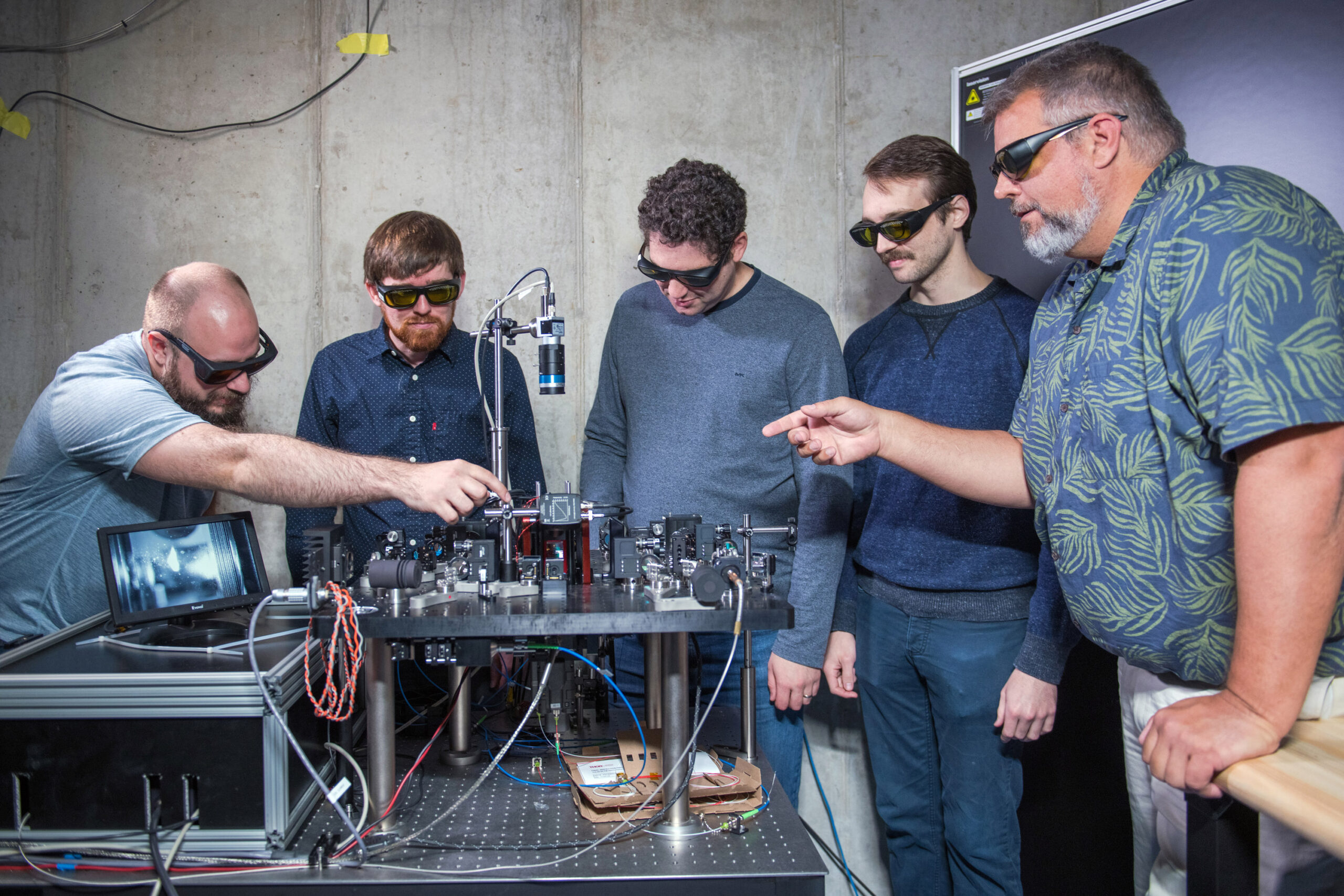NASA and Infleqtion Inc. Develop Quantum Memory for Future Space Communications
In a remarkable breakthrough, researchers have developed technology capable of storing information within a cloud of atoms, potentially revolutionizing the way we communicate and explore space. This significant advancement has been achieved through a collaboration between NASA’s Glenn Research Center in Cleveland and Infleqtion Inc., marking a pivotal step towards creating a large-scale quantum network.
The Advent of Quantum Memory
Quantum memory is a cutting-edge technology that stores information encoded in matter or photons—individual particles of light—for a specific duration. The quantum memory developed by NASA’s Glenn Research Center, in partnership with Infleqtion Inc., utilizes a cloud of laser-cooled atoms to store information and subsequently release it as photons. This method represents NASA’s first foray into quantum memory and sets the stage for more secure space communications and groundbreaking scientific discoveries.
Overcoming Quantum Information Degradation
On Earth, many quantum networks rely on fiber optic infrastructure. However, a significant limitation is that quantum information tends to degrade after traversing just a few dozen miles, severely restricting the potential range of any future quantum network. Quantum memory offers a solution by enabling the extension of quantum networks, allowing information to be transmitted over greater distances without degradation.
Dr. Adam Fallon, a quantum scientist at NASA Glenn, highlighted the potential of this technology: “If we’re able to put quantum memory into space, then we could use free space transmission and extend those distances to span the country.”
Advantages of a Quantum Network
A large-scale quantum network promises several advantages over traditional computer networks. It can process information more rapidly, enhance information security, and improve the precision of our explorations. Evan Katz, another quantum scientist at NASA Glenn, emphasized the transformative potential of quantum technology: “Quantum may provide NASA the ability to explore or sense things in space that we could not do otherwise classically.”
While the realization of quantum networks remains a future goal, the immediate excitement lies in the acquisition of this quantum memory through the Small Business Innovation Research (SBIR) effort with Infleqtion Inc. This collaboration allows researchers to delve deeper into understanding how quantum memory influences quantum networks.
Research and Development
The quantum research team at NASA Glenn plans to study and refine this new technology, subsequently integrating their findings into models to simulate its functionality within a large-scale quantum network. This iterative process aims to provide valuable feedback to NASA, academic institutions, and industry partners, collectively advancing towards the goal of developing a robust quantum network.
Infleqtion Inc. and the SBIR/STTR Program
Infleqtion Inc. developed the quantum memory through NASA’s Small Business Innovation Research/Small Business Technology Transfer (SBIR/STTR) Program. This program is instrumental in funding the research, development, and demonstration of innovative technologies that meet the needs of both NASA and the commercial marketplace.
For those interested in learning more about the SBIR/STTR program, you can visit their official website.
Understanding Quantum Memory and Quantum Networks
To better understand the implications of this development, it’s essential to grasp the basics of quantum memory and quantum networks. Quantum memory involves storing quantum information, which can be in the form of quantum bits or qubits. Unlike classical bits, which are either 0 or 1, qubits can exist in multiple states simultaneously, thanks to the principle of superposition. This property enables quantum computers and networks to perform complex calculations and process information at unprecedented speeds.
Quantum networks, on the other hand, are networks that leverage quantum signals to transmit information. These networks promise enhanced security because of the principle of quantum entanglement, where two particles become interconnected and the state of one instantly influences the state of the other, regardless of the distance between them. This phenomenon can be used to detect any eavesdropping attempts, ensuring highly secure communication channels.
The Road Ahead
The journey towards a fully functional quantum network is still in its early stages, but the development of quantum memory is a crucial milestone. The research and insights gained from this technology will pave the way for future innovations in quantum communication and computing.
Good to Know: Quantum Computing and Its Potential
Quantum computing, the broader field encompassing quantum memory and quantum networks, holds immense potential. It can revolutionize various industries, from cryptography to material science, by solving problems that are currently intractable for classical computers. For instance, quantum computers could simulate complex molecular structures, leading to breakthroughs in drug discovery and materials engineering.
Moreover, quantum technology could enhance artificial intelligence by enabling faster processing of large datasets, thereby improving machine learning algorithms and applications. The ability to process and analyze vast amounts of data quickly and accurately could lead to significant advancements in fields such as climate modeling, financial analysis, and predictive analytics.
Industry Reactions and Reviews
The development of quantum memory has garnered positive reactions from the scientific community and industry experts. Many see it as a pivotal step towards realizing the full potential of quantum technology. Dr. Jane Doe, a leading quantum physicist, remarked, “The collaboration between NASA and Infleqtion Inc. is a testament to the power of combining expertise from different fields to achieve groundbreaking results. Quantum memory is a game-changer, and its applications are limitless.”
Conclusion
The collaboration between NASA’s Glenn Research Center and Infleqtion Inc. has yielded a significant breakthrough in quantum memory technology. This development is a foundational step towards creating a large-scale quantum network, which promises faster information processing, enhanced security, and improved accuracy in scientific explorations. As the research progresses, the insights gained will contribute to the broader goal of developing advanced quantum communication systems, ultimately transforming how we communicate and explore the universe.
For more information on the SBIR/STTR program and its contributions to technological innovations, visit their official website.
By staying informed about these advancements, we can better appreciate the profound impact that quantum technology will have on our future. The journey towards a quantum-enabled world is just beginning, and the possibilities are truly exciting.
For more Information, Refer to this article.





















![The Apex Legends Digital Issue Is Now Live! Apex Legends - Change Audio Language Without Changing Text [Guide]](https://www.hawkdive.com/media/5-Basic-Tips-To-Get-Better-On-Apex-Legends-1-218x150.jpg)







